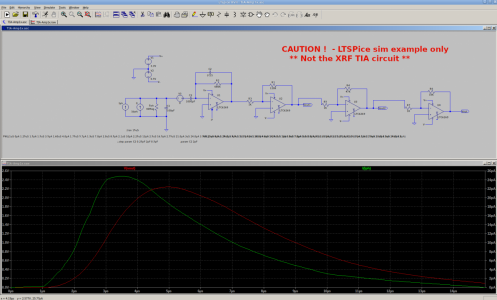- Joined
- Mar 3, 2017
- Messages
- 744
[about Wilkinson ADC]
The Wilkinson scheme integrates charge during the pulse rise, so it does get half the area under the pulse; the fall time
is independent of the radiation received, depends instead on clearing stored charge out of the detector.
That trailing edge may not best serve the measurement purpose.
As for pulse overlap, delay-line difference circuit was useful in cancelling out the
slow exponential decay characteristic. It sounds elaborate, but just recognizes that exponential decay
is self-similar, the nanoseconds-ago value times one-plus-epsilon, subtracted from the 'now' value,
equals zero, i.e. no evidence of the old peak in the difference signal. That kinda clobbers the
trailing edge for the measurement, of course. We did it that way for accurate measurements anyhow.
Every two-meter Ethernet wire can give circa 32 nanoseconds of delay.
It is the "pulse stretching" that masks the energy we are trying to represent. It's no problem if all we want to get is the count of arrivals, but the slowed down, low-pass filtered pulse loses much of the amplitude information that allows discrimination into allocating that energy into "bucket accumulator" counts. The necessary thing is to get the area under the roughly triangular pulse waveform, or some good approximation thereof, because Charge x Time integration = Energy
The Wilkinson scheme integrates charge during the pulse rise, so it does get half the area under the pulse; the fall time
is independent of the radiation received, depends instead on clearing stored charge out of the detector.
That trailing edge may not best serve the measurement purpose.
As for pulse overlap, delay-line difference circuit was useful in cancelling out the
slow exponential decay characteristic. It sounds elaborate, but just recognizes that exponential decay
is self-similar, the nanoseconds-ago value times one-plus-epsilon, subtracted from the 'now' value,
equals zero, i.e. no evidence of the old peak in the difference signal. That kinda clobbers the
trailing edge for the measurement, of course. We did it that way for accurate measurements anyhow.
Every two-meter Ethernet wire can give circa 32 nanoseconds of delay.


